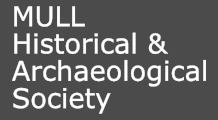Famous Visitors
The following extracts are taken from 'Historic Visitors to Mull, Iona & Staffa' written by Eve Eckstein and published by Excalibur Press of London in 1992.
Mrs Eckstein begins at the very beginning, 4000-1500 years before Christ, with the builders of brochs and standing stones. This short chapter refers to the relevance of astronomical observations in the construction of standing stones and stone circles and goes on to discuss brochs, which are peculiar to Scotland.
In 563, St Columba left Ireland to spread the news of Christianity. He landed, first on Oronsay, but on finding that he could still see Ireland decided to sail further north and eventually landed, out of sight of Ireland, on Iona. It may be that St Columba was the first 'recorded' historic visitor to this small group of Inner Hebridean islands.
The self-styled 'Sir Donald Munro, High Dean of the Isles' visited many of the islands in 1549 as the 'Bishop's Eye'. Roderick Maclean became Bishop to the Isles from 1549 to 1555 and, as Archdeacon, Donald Munro made himself familiar with his Diocese. Mrs Eckstein quotes Sir Donald's brief description of Mull and also Gometra and Calve Island.
Martin Martin came from Bealach on Skye and in 1695 he reported on the 17th Century social customs of Mull in his book 'A Description of the Western Isles of Scotland'. Martin came from a middle-class family of tacksmen (factors on the lairds' estate). He graduated MA from the University of Edinburgh in 1681 and died in 1719.
William Sacheverell published his book giving an account of a journey to the Isle of Man and a voyage to Iona in 1702. He was involved in Parliamentary affairs from 1607 to 1691 and was also MP for Northampton. In her book, Mrs Eckstein tells the story of Sacheverell's attempt to recover the lost treasure from the Spanish galleon, which was blown to pieces and sunk in Tobermory Bay.
In 1771 Thomas Pennant, a noted Welsh traveller, made a tour to the Western Isles with his companion the Rev. J Lightfoot who published his book 'Flora Scotia' in 1777.
Sir Joseph Banks, naturalist and president of the Royal Society from 1778 to 1819, visited Staffa in 1772, spending a night on the island during which occured an amusing incident, 'On their arrival at Staffa they (Banks and his party) erected a tent.....to pass the night, but the only inhabitant (of the island) pressed Sir Joseph to come and sleep in his hut, and that out of compliance he consented and left his companions under the tent. On leaving the hut next morning he discovered he had acquired a colony of vermin. He mentioned the circumstances to his host in terms of mild surprise, but the latter, who was touched to the quick, perked himself up and, assuming a tone of consequence, reported haughtily and harshly that it was Sir Joseph himself who had imported the lice to his island and adding that it would have been better to have left them behind in England.'

